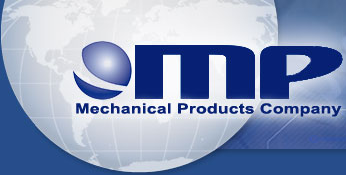In considering the most critical UL 1077 performance categories, we first reviewed the Tripping Current (TC) and then Overload (OL) performance ratings supplementary protectors may qualify to.
While we consider the TC and OL ratings equally as critical, the third of our examples, Short-circuit (SC) performance rating, may have the greatest potential for causing application mistakes. This is because under the SC performance category, the circuit protector manufacturer is allowed the greatest latitude in how it may qualify its device to UL 1077.
For surety of protection, the protector selected needs to be capable of clearing the maximum fault potential of the application. The OEM’s design/application need for the reusability of the protector after clearing a short circuit also must be considered. Reusability of the circuit protector after clearing a fault can be very beneficial in limiting an OEM’s future expenses for service calls and warranty claims, and could be considered an essential requirement in critical applications, like medical equipment.
In qualifying a device to UL 1077 for Short-circuit (SC) performance, the supplementary protector manufacturer:
- Defines the test’s:
- Maximum AC and/or DC Voltage.
- Short-circuit (kilo-amperes) current.
- Chooses 1 of 7 UL predetermined SC test set-ups that demonstrate increasing degrees of a protector’s design robustness/capability/survivability.
- See table below for further explanation. The table defines the various SC codes and offers comments on the implications of each.
By UL definition, the short-circuit current rating in kilo-amperes (kA) is followed by a letter and number designating the test conditions and any recalibration following the short-circuit test as follows:
| SC Code |
UL Definition |
Comments |
|
C1* |
The short-circuit test was conducted with (backup) series overcurrent protection, without recalibration afterchecks. | Easiest level to qualify to. The protector “passes” whether or not it actually cleared the fault, i.e., the protector may have only demonstrated its ability to conduct the fault current. |
|
C1a* |
The short-circuit test was conducted with the protector having been permanently open after the test ; and dielectric strength and voltage withstand aftercheckswere performed. | Similar to “C1”, however the protector opened (fused), and post tests were conducted to confirm there was no breakdown in the protector’s insulating materials, and that no unintended conductive paths were created. |
|
C2* |
The short-circuit test was conducted with series overcurrent protection, with recalibration and dielectric strength afterchecks performed. | Similar to “C1”, but recalibration afterchecks confirmed selected “Tripping Current” (TC) characteristics were maintained. |
|
U1** |
The short-circuit test was conducted without series overcurrent protection, without recalibration afterchecks. | Tested as a stand alone protector (without a backup), the protector cleared the fault, but may not be reusable. |
|
U1a** |
The short-circuit test was conducted without series overcurrent protection; and dielectric strength and voltage withstand afterchecks were performed. | Similar to “U1”, however the protector opened (fused), and post tests were conducted to confirm there was no breakdown in the protector’s insulating materials, and that no unintended conductive paths were created. |
|
U2** |
The short-circuit test was conducted without series overcurrent protection, with recalibration and dielectric strength afterchecks performed |
Similar to “U1”, but recalibration after checks confirmed selected “Tripping Current” (TC) char acteristics were maintained |
|
U3** |
The short-circuit test was conducted without series overcurrent protection and the protector was proven suitable for further use after the short-circuit test; recalibration, dielectric strength and voltage withstand afterchecks were performed. | Highest level of qualification. At the specified level of short circuit current, the battery of afterchecks confirms the protector’s suitability for further use – “Tripping Current” (TC) characteristics and the integrity of the insulating materials have been confirmed. |
* The “C” prefix designates the short circuit tests were conducted with a backup device, usually a fuse to simulate upstream/cascaded protection that is present in certain applications.
** The “U” prefix designates that the short circuit tests were conducted without a backup device, clearly demonstrating the protector’s ability to eliminate the defined fault.
From this summary of UL1077 Short circuit (SC) options, it is clear that the potential exists for significant performance differences between devices carrying the same “UL Mark”. For a given level of overload, a protector compliant to an SC rating of U3 offers much greater surety of protection and durability than one merely qualified as a C1 device. Close attention to the OEM design needs relative to this particular attribute is essential for maximizing the safety and durability of the OEM’s product. Needless to say, applications assistance from the supplementary protection manufacturer may prove quite helpful in selecting the protector that best suits a design’s requirements.

